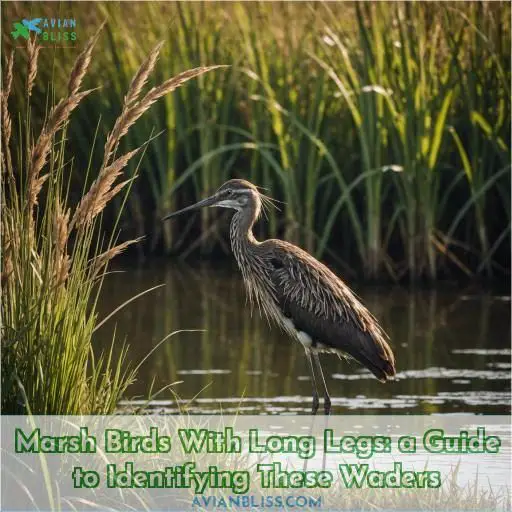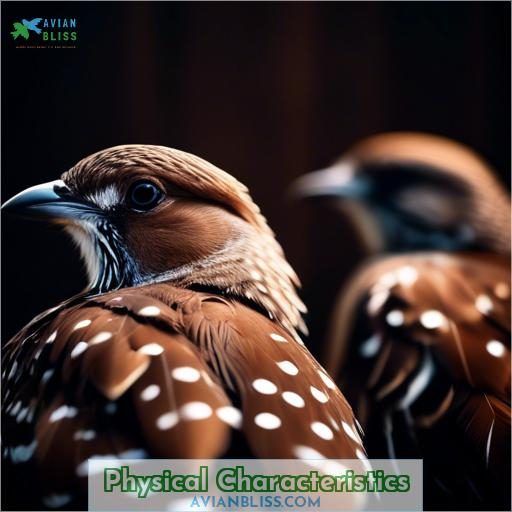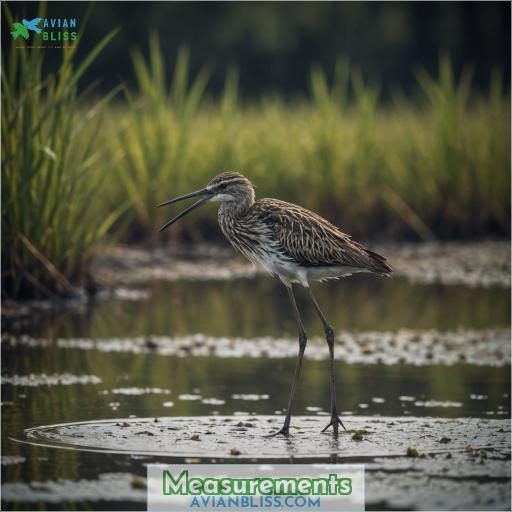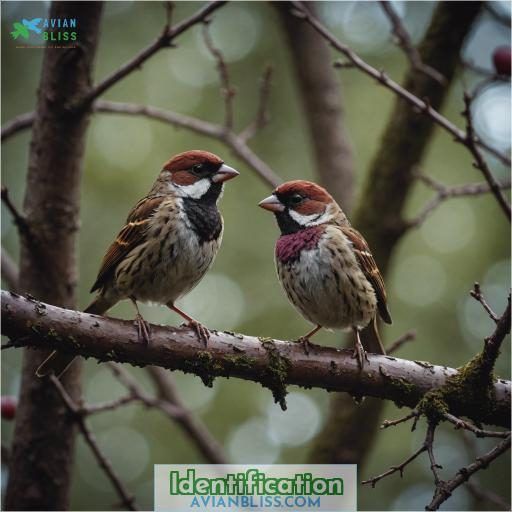This site is supported by our readers. We may earn a commission, at no cost to you, if you purchase through links.
 You’re likely spotting the purple gallinule, a marsh bird with remarkably long legs.
You’re likely spotting the purple gallinule, a marsh bird with remarkably long legs.
This crow-sized wader has a small head, slender neck, and petite red-and-yellow bill atop its elegant purple plumage.
While poised, its refined features and graceful movements belie deceptive power.
Look for it walking on lily pads, swimming with buoyant wings raised, or aggressively defending territory.
Inhabiting freshwater marshes and dense vegetation, these social birds pair-bond in small groups.
Measuring around 13 inches long with a 23-inch wingspan, further details reveal intriguing adaptations for marsh living.
Table Of Contents
Key Takeaways
- The purple gallinule is a medium-sized marsh bird with distinctive long legs and toes, allowing it to walk on lily pads and traverse dense aquatic vegetation.
- These birds are known for their elegant purple plumage, small head, slender neck, and petite red-and-yellow bill, giving them a graceful and refined appearance.
- Purple gallinules are highly social, often seen in pairs or small groups, engaging in lively pair-bonding and territorial defense behaviors.
- They thrive in freshwater marshes, swamps, and agricultural areas with dense vegetation, building their nests near the water’s edge.
Physical Characteristics
You’re looking at a medium-sized marsh bird with an unmistakable set of elongated legs and toes, ideal for wading through shallow waters and traversing dense vegetation. Its small head, thin neck, and petite bill betray its identity as a unique wading species, with a body size comparable to that of a crow.
Medium-sized Marsh Birds
As medium-sized marsh birds, purple gallinules have a small head, thin neck, and compact crow-sized body. Their distinctive purple plumage and red-and-yellow bill make them stand out in wetlands.
Long Legs and Toes
The long legs and toes of this marsh bird allow it to walk on lily pads, swim long distances, and aggressively defend its territory while feeding on aquatic prey.
Small Head, Thin Neck, Small Bill
The marsh bird’s small head and thin neck give it a delicate, graceful appearance. Its diminutive bill belies the bird’s impressive size and strength as a wading beauty.
- Elegant poise
- Deceptive power
- Graceful movements
- Charming presence
- Refined features
Crow-sized
At a crow-sized stature, this marsh bird’s long legs allow it to stride across lily pads with ease. Its distinctive feathers and vocalizations set it apart from similar species.
| Trait | Description |
|---|---|
| Size | Crow-sized |
| Legs | Long, enabling movement across dense vegetation |
| Feathers | Distinctive coloration and patterns |
| Vocalizations | Unique calls and sounds |
Behavior
You’ll often spot these marsh birds holding their wings up while swimming, a distinctive behavior that aids buoyancy. Their long legs and toes allow them to effortlessly walk on lily pads, granting access to food sources in dense aquatic vegetation.
Hold Wings Up While Swimming
As a marsh bird, you’ll hold your wings up while swimming to stay afloat and navigate the dense vegetation and water lilies.
Walk on Lily Pads
As a marsh bird with long legs, you deftly hop across lily pads, using your wings to maintain balance and stability.
- Your lily pad hopping allows you to access nesting vegetation and forage for aquatic prey.
- You display territorial aggression, flaring your wings to assert dominance over other birds in your marsh habitat.
- Your wing positioning is vital for maintaining your unique ability to walk on the water’s surface.
Seen in Pairs or Small Groups
You’ll often spot these birds in pairs or small groups, engaging in lively pair bonding and group dynamics through vocalizations.
| Behavior | Description |
|---|---|
| Pair Bonding | Marsh birds form strong pair bonds, working together to defend territory and raise young. |
| Territorial Behavior | Pairs aggressively defend their nesting area, chasing away intruders with loud calls. |
| Mating Rituals | Courtship displays include wing-flapping, head-bobbing, and duets to strengthen the pair bond. |
| Group Dynamics | Juveniles and non-breeding adults may join foraging flocks, coordinating movements and vocalizations. |
| Vocalizations | A variety of clucks, grunts, and trills are used for communication within the group. |
Aggressive Towards Other Birds
These birds can be quite aggressive, fiercely defending their territory and competing for mates, often attacking other marsh birds that intrude.
Feed on Aquatic Plants and Animals
The yellow rail’s long toes help it gracefully traverse floating vegetation as it forages for aquatic plants, insects, and small crustaceans. Its aggressive nature protects its purple plumage and swimming prowess.
- Forages for aquatic plants
- Hunts insects and crustaceans
- Traverses vegetation with long toes
- Protects vibrant purple plumage
Measurements
A key identifier for this long-legged marsh bird is its size – ranging from 12.6-13.8 inches (32-35 cm) in length with a wingspan of 21.3-24.4 inches (54-62 cm). It’s a medium-sized bird, weighing between 10.9-16.1 ounces (310-456 grams), making it slightly larger than a crow but smaller than a duck.
Length: 12.6-13.8 in (32-35 Cm)
The common gallinule’s length of 12.6-13.8 inches (32-35 cm) makes it a crow-sized marsh bird. Its small head, thin neck, and long legs are distinctive features. These birds thrive in dense wetland habitats, often seen walking on floating vegetation.
| Characteristic | Measurement |
|---|---|
| Length | 12.6-13.8 in (32-35 cm) |
| Wingspan | 21.3-24.4 in (54-62 cm) |
Weight: 10.9-16.1 Oz (310-456 G)
The Common Gallinule’s weight ranges from 10.9-16.1 oz (310-456 g), with males typically heavier than females. This weight variability reflects differences by age, season, and habitat.
Wingspan: 21.3-24.4 in (54-62 Cm)
With a wingspan of 21.3-24.4 inches, this unique marsh bird’s long toes help it gracefully wade through dense vegetation. Its broad wingspan aids its agile flight as it navigates its freshwater habitat.
Habitat
You’ll find these long-legged marsh birds inhabiting freshwater marshes, swamps, and areas with dense aquatic vegetation, where they construct nests near the water’s edge. Rice fields and other agricultural regions with shallow water also provide suitable habitat for these wading beauties.
Freshwater Marshes and Swamps
You’ll find this unique wader in freshwater marshes and swamps, where it walks on floating vegetation, its purple plumage shimmering in the good light. Look for its blue forehead shield and long toes.
Dense Vegetation
The dense vegetation of marshes provides ample food sources and nesting sites for these unique waders. Their mating rituals and population trends depend on this habitat.
- Abundant aquatic plants and insects
- Concealed nests hidden from predators
- Courtship displays among the reeds
- Adaptations to thrive in dense growth
- Vulnerable to habitat loss and degradation
Rice Fields and Agricultural Areas
In rice fields and agricultural areas, these marsh birds thrive, taking advantage of the abundant food sources and dense vegetation. However, habitat conversion poses a threat.
| Rice Cultivation | Agricultural Impact | Habitat Conversion |
|---|---|---|
| Provides abundant aquatic plants and insects | Can disrupt natural water cycles and drainage | Draining wetlands destroys critical nesting sites |
| Allows birds to forage and nest in flooded fields | Introduces invasive species that outcompete native prey | Reduces available habitat, forcing birds to relocate |
Nests Built Near Water
These birds build their nests near water, using marsh plants to construct sturdy homes. They fiercely defend their territory and engage in elaborate mating rituals before incubating their eggs.
Identification
To precisely determine the identity of this long-legged marsh bird, you must compare it to comparable species such as the Sora and Mallard, utilizing resources like the Merlin Bird ID app that can analyze photographs to provide possible matches. Meticulously examining physical characteristics and consulting detailed images will be essential in differentiating this wading beauty from its doppelgangers.
Similar to Sora and Mallard
The purple gallinule may resemble the sora or mallard, but its distinctive red-and-yellow bill, purple plumage, and long legs set it apart. Juvenile and immature birds have different color patterns, so close observation is key.
Use Merlin Bird ID App for Assistance
The Merlin Bird ID app is a powerful tool to assist with identifying this marsh bird. Use it to compare your sighting against similar species and get expert guidance on the unique features.
Compare With Images of Similar Species
Compare the bird’s features to photos of similar species like the Sora and Mallard using the Merlin Bird ID app. Note differences in plumage between juveniles, adults, and immatures to confirm identification.
Frequently Asked Questions (FAQs)
What is the birds scientific name?
You hit the jackpot – the bird’s scientific name is Porphyrio martinica, also known as the Purple Gallinule. This striking marsh-dweller boasts vibrant purple plumage and elongated toes perfectly adapted for treading on aquatic vegetation.
How long do these birds typically live?
You’re in for a treat! These vibrant birds can live up to 12 years in the wild with their clever survival tactics. Their longevity allows you to enjoy their striking presence year after year in your local marshes.
What is the purpose of their long legs?
In brief, their elongated limbs empower these avian creatures to traverse buoyant plant life, dispersing their weight equitably. This enables them to reach optimal foraging and nesting zones within marshy environments. It’s an evolutionary trait that guarantees their continued existence.
Do they migrate or are they year-round residents?
You’ll find these long-legged beauties in freshwater marshes year-round. Some make short migrations, but many stick around, wading through the shallows with their clever, spindly legs.
How can I attract these birds to my backyard?
Attract these birds by creating a backyard marsh habitat – dig a shallow pond, line it with a rubber liner, and plant tall aquatic vegetation like cattails and rushes. Provide areas of open water and floating vegetation; they’ll find their way to this oasis.
Conclusion
Remarkably, the purple gallinule can double its body weight before migration.
With its long legs adapted for marsh living, identifying this unique wader becomes straightforward after observing its behaviors.
Inspect dense vegetation near freshwater for this social marsh bird walking on lily pads or aggressively defending its territory.
Its elegant purple plumage and upright swimming stance make it an unmistakable marsh beauty.








